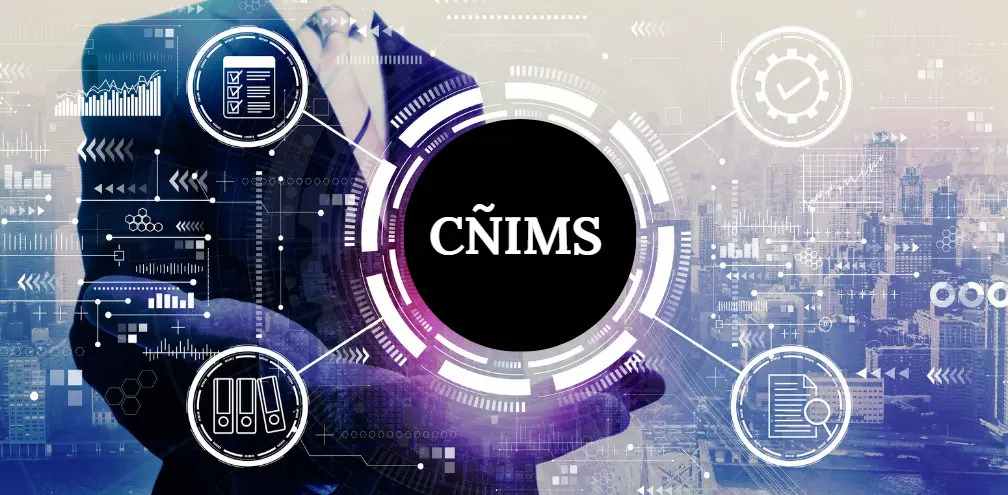“Cñims” refers to high-performance computing systems designed for efficient processing of large datasets and complex algorithms, revolutionizing industries with its scalability, parallel processing capabilities, and application versatility.
Understanding Cñims: Exploring Its Significance and Applications
In the rapidly evolving landscape of technology and computing, the concept of “cñims” emerges as a cornerstone of high-performance computing (HPC) solutions.
This article delves deep into the multifaceted realm of cñims, elucidating its definition, historical evolution, key features, diverse applications across industries, future trends, and the inherent challenges it addresses.
What are Cñims?

Cñims, an acronym derived from the Latin phrase “computatio nimius,” translates to “excessive computation.” It represents a sophisticated computational framework designed to tackle immense datasets and complex algorithms with unparalleled efficiency and speed.
As the demand for processing power and data analytics capabilities grows exponentially across various sectors, cñims have emerged as indispensable tools for advancing scientific research, industrial applications, and technological innovations.
Evolution and Historical Context:
The origins of cñims trace back to the early 21st century, spurred by the need to harness computational resources more efficiently for scientific simulations, weather forecasting, and genomic research.
Initially confined to academic and research institutions, cñims rapidly expanded its footprint into commercial sectors, driven by advancements in hardware architecture, parallel processing techniques, and algorithmic sophistication.
Key Features and Components:
Scalability and Performance Optimization:
At the core of cñims’ architecture lies its ability to scale computational tasks seamlessly across distributed systems comprising multiple nodes and processors. This scalability not only enhances performance but also ensures robustness in handling large-scale data processing and real-time analytics.
Parallel Processing Paradigms:

Cñims leverage parallel processing paradigms such as task decomposition and workload distribution to divide complex computations into smaller, manageable tasks.
By executing these tasks concurrently across distributed computing resources, cñims achieve significant speed-ups in processing time and resource utilization efficiency.
Algorithmic Flexibility and Customization:
Modern cñims platforms offer extensive support for diverse algorithms and computational models, empowering researchers, data scientists, and engineers to tailor solutions to specific application domains.
From machine learning algorithms for predictive analytics to numerical simulations for engineering design optimizations, cñims enable precise modeling and simulation across a spectrum of disciplines.
Healthcare and Life Sciences:
In the realm of healthcare, cñims play a pivotal role in accelerating biomedical research, genomic sequencing, and personalized medicine. By analyzing vast genomic datasets and patient health records, cñims facilitate the discovery of novel therapies, disease biomarkers, and treatment protocols, thereby revolutionizing clinical decision-making and healthcare delivery.
Finance and Risk Management:

Within the financial sector, cñims underpin algorithmic trading strategies, risk assessment models, and fraud detection systems. By processing real-time market data and historical trading patterns, cñims enable financial institutions to optimize investment decisions, mitigate operational risks, and safeguard against fraudulent activities with enhanced accuracy and speed.
Environmental Science and Sustainability:
Environmental scientists leverage cñims to model complex ecosystems, predict natural disasters, and assess climate change impacts. Through sophisticated computational simulations and data-driven analysis, cñims contribute to sustainable resource management, biodiversity conservation efforts, and policy formulation aimed at mitigating environmental risks and promoting ecological resilience.
Integration with Quantum Computing:
As quantum computing continues to advance, the convergence of cñims with quantum algorithms promises revolutionary advancements in computational capabilities. Quantum-enhanced cñims can exponentially accelerate complex computations, including cryptography, materials science simulations, and optimization problems that are currently beyond the reach of classical computing architectures.
Advancements in Artificial Intelligence and Machine Learning:
The synergy between cñims and artificial intelligence (AI) technologies drives innovation in predictive analytics, natural language processing, and computer vision applications.
By integrating deep learning algorithms with cñims’ computational prowess, organizations can derive actionable insights from massive datasets, automate decision-making processes, and unlock new avenues for technological innovation across industries.
Data Security and Privacy:
The proliferation of cñims introduces significant challenges related to data security, privacy protection, and regulatory compliance. As organizations process sensitive information and personal data using cñims, robust encryption protocols, access controls, and adherence to data protection regulations become imperative to mitigate cybersecurity risks and safeguard stakeholders’ confidentiality.
Computational Complexity and Optimization:

Managing the inherent computational complexity of cñims requires continuous optimization of algorithms, software frameworks, and hardware infrastructures.
Organizations must invest in research and development initiatives to enhance cñims’ efficiency, scalability, and energy efficiency while minimizing operational costs and environmental impact.
FAQ’s:
1. What does “cñims” stand for?
“Cñims” stands for “computatio nimius,” Latin for excessive computation, representing advanced high-performance computing systems.
2. How are cñims used in healthcare?
In healthcare, cñims facilitate genomic sequencing, drug discovery, and personalized medicine through advanced data analysis and modeling.
3. What industries benefit from cñims?
Cñims benefit industries such as finance (for risk analysis and algorithmic trading), healthcare (for medical research), and environmental science (for climate modeling and disaster prediction).
4. What are the future trends for cñims?
Future trends include integration with quantum computing for enhanced computational power and advancements in AI for deeper insights and automation.
5. What challenges do cñims face?
Challenges include data security concerns, managing computational complexity, and optimizing energy efficiency to sustain high-performance operations.
6. How do cñims handle large-scale data processing?
Cñims leverage parallel processing techniques across distributed systems to efficiently handle large volumes of data, ensuring scalability and performance.
7. What are the key features of cñims?
Key features include scalability, parallel processing, algorithmic flexibility, and the ability to handle complex computational tasks with high efficiency.
8. Why are cñims important for scientific research?
Cñims enable scientists to conduct complex simulations, analyze vast datasets, and accelerate discoveries across disciplines such as physics, chemistry, and biology.
9. How do cñims contribute to sustainability efforts?
Cñims aid environmental scientists in modeling ecosystems, predicting climate patterns, and assessing environmental impacts to support sustainable resource management practices.
10. What role does AI play in enhancing cñims’ capabilities?
AI enhances cñims by enabling advanced machine learning algorithms for predictive analytics, natural language processing, and image recognition tasks, boosting decision-making accuracy and efficiency.
Conclusion:
Cñims epitomizes the transformative power of high-performance computing in accelerating scientific discoveries, driving economic growth, and addressing societal challenges across diverse domains. As technological advancements and interdisciplinary collaborations propel the evolution of cñims, its role in shaping the future of data-driven innovation and computational research remains indispensable.



